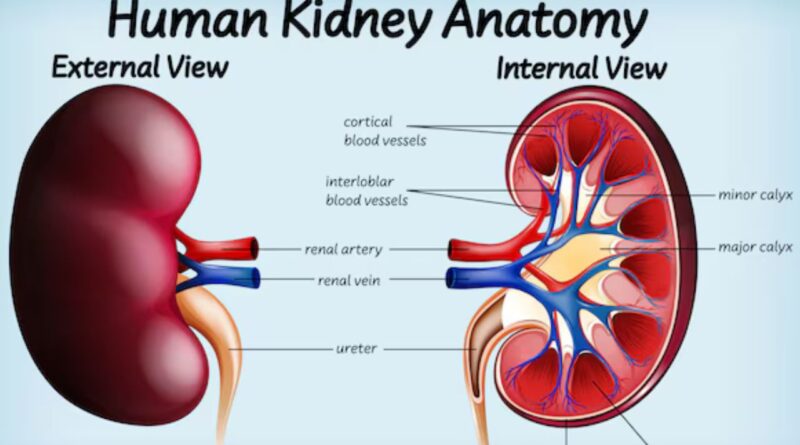Kidney Stone Size Chart in mm and Treatment
Introduction
Kidney stones are small, hard deposits forming inside the kidneys that cause very disturbing, painful moments. Kidney stone size is really a material fact, mostly depending upon that particular required dimension is further decided the treatment category necessary to adopt by a patient. The “kidney stone size chart mm and treatment“ is very important, Stones may come in different sizes, and even a small discrepancy in theirs might be very much relevant to how your treatment proceeds. Below article presents a kidney stone size chart in mm and how many treatment options are available that may be considered.
Understanding Kidney Stone Sizes

The size of the kidney stone can be anything from as small as a grain of sand to as large as a golf ball. This is the reason why the “kidney stone size chart in mm and treatment” is used to categorize the stones depending on sizes: less than 4 mm and up to over 20 mm. The stones of less than 4 mm usually pass through the urinary tract quietly enough and do not cause much pain. However, with an increasing size, the spontaneous passage diminishes, and the need for medical intervention rises. It becomes important to know the size of the stone since this would let the patient know whether one could be treated at home.
Kidney Stone Size Chart: Chances of Passing & Treatment
The size of the kidney stone, measured in millimeters, and treatment options go hand in hand in the management of the disease. While stones of less than 5 mm in diameter may pass on their own without interference, larger stones at times need medical interference with shockwave therapy or even surgery. Understanding the size of your kidney stone helps your doctor decide the best course of treatment and your chances of passing it naturally.
Key Points:
Stones less than 5 mm:
These normally pass with fluids on their own.
Stones:
These may require medical interference like medication or lithotripsy.
Larger than 10 mm:
These usually need to be removed surgically.
Kidney stones that are less than 4mm

in diameter are considered to be of a small size and usually can pass out of the urinary tract without any problem. On the kidney stone size chart mm and treatment, this has an 80% chance of it occurring naturally. Treatment for stones of this size usually consists of increased fluid intake to help flush out the stone and some over-the-counter pain medications to help with discomfort. Some medications may be recommended to relax the ureter and facilitate a passage. These small stones mostly still cause much discomfort while moving in the urinary tract but do not usually warrant invasive treatment.
4 mm to 6 mm Stones

Stone measuring between 4 mm through to 6 mm have high chances of passing naturally with a success rate of about 60%. According to the data from “kidney stone size chart in mm and treatment”, a certain percentage will pass without medical treatment while others may need intervention. When no such stone passes within a few weeks, or the stone is such that it produces severe pain or blockage, the treatment methods adopted are extracorporeal shock wave lithotripsy (ESWL) and ureteroscopy. The shock waves created in ESWL break the stone into small pieces that then pass out easily. In ureteroscopy, a thin scope either removes a stone or breaks it into smaller pieces.
Stones with a diameter of 6 to 10 mm
Large stones between 6 mm and 10 mm are large and less likely to pass out on their own. This has a success rate of only 20 percent. The “kidney stone size chart in mm and treatment” has you covered, though stones of this size are more likely to be treated with medical procedures. Treatments for these include ESWL, ureteroscopy, and PCNL. PCNL is a less invasive surgical process where in a small incision is made on the back to extract the stone directly from the kidney. Usually, patients with stones in this size range have more severe symptoms such as acute pain, nausea, and difficulty in urinating, warranting their being brought in for immediate medical care.
Stones Larger Than 10 mm

When a kidney stone is beyond 10 mm, this size is always considered nearly large enough to require medical intervention because it is a huge size to these types of stones. The “kidney stone size chart in mm and treatment” indicates the other problem that may be caused by this situation, whereby the stones are unlikely to come out through body functions and cause severe complications, such as blockage of the urinary tract and even more complications, like infections. Treatment modalities for stones larger than 10 mm are largely PCNL and open surgery, and their choice mostly depends on the location of the stone in the kidney concerned and the general health status of the patient.
Symptoms and Time to see a doctor

Common symptoms include very bad pain in the back or side, blood in the urine, nausea, vomiting, and frequent urination. The “kidney stone size chart in mm and treatment” can be a good resource to identify when such symptoms could indicate a stone that very much calls for medical attention. If the pain is excruciating, if passing urine cannot be done, or if there are any signs of infection such as fever or chills, it is of utmost importance to take medical help right there and then. Not wanting to say it specifically, but larger stones might lead to serious complications if treatment is delayed.
Precautions for the Kidney Stone

Prevention of kidney stones is a step mainly participated in by special changes in diet and lifestyle. The kidney stone size chart in mm and treatment would prove to be a very important tool for not only the treatment of an existing stone but also, in some ways, for preventing future risks that are associated with stones of similar sizes. Lowering the chances of stone formation can be done by consuming proper amounts of water, low salt and protein diets, and avoiding foods high in oxalate like spinach and nuts. In severe cases, such as in a setting of a previous history of multiple kidney stones, medicines may be prescribed to take as a prophylaxis for stone prevention.
Home remedies
can prove to be efficient in managing the condition, particularly for small stones that are less than 4 mm in diameter. The best way to encourage a small stone to pass: increase fluid intake, mainly water. According to “kidney stone size chart in mm and treatment,” one should increase fluid intake, mainly water. Painkillers, like ibuprofen, may be taken to relieve the pain when discharging the stone. At any rate, before doing anything, one should consult a health care provider if there are some other problems.
Medical management for larger stones

Larger stones of 6 mm and above, in general generally require medical intervention since leaving them untreated might lead to serious complications. A medical preparation or kidney stone size chart in mm and treatment lists down the various medical procedures like ESWL, ureteroscopy, The size of the stone, its location, and overall health of the patient influence the chosen procedure. Though the procedures are quite safe, they do come with some risks, such as the risk of infection or bleeding, and recovery times can vary.
Conclusion
The “kidney stone size chart in mm and treatment” can help to gain appropriate knowledge of the processes for the effective management and treatment of removing kidney stones. The dimension of the stone plays a great role in determining the line of management; smaller stones are usually managed at home, while larger stones have to be evacuated medically. When the symptoms are noticed at an early stage and the appropriate treatment options are used, patients can lower the risk of complications and better the chances of a swift recovery. Preventive measures include taking more water and making dietary changes in the long run to prevent the likelihood of developing kidney stones in the future.




